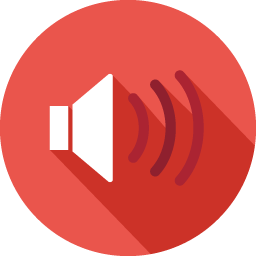Why a Pumping Bass Makes You Yearn for Black Sweaters
Relevant topics Archive, Conversion
We don’t like to admit it, but as humans we do a pretty bad job at controlling our attention. Sure, we can actively choose to maintain or divert our focus after something has captured our attention. But we hardly understand why it grabbed our eyes in the first place.
What determines where we look at?
Interestingly, subtle things may powerfully sway our subconscious attention. If you skipped breakfast, it’ll become a bit more likely your eyes will stop at the next McDonald’s sign. If you drive past a bus of elderly people, you’ll be more likely to spot a billboard advertising a holiday to Miami.
Oftentimes, your senses interact with your attentional focus. If you smell the scent of roses, you’ll be more likely to spot roses within your surroundings. If you hear David Bowie, you’ll be more likely to unearth an album of the thin white duke amidst piles of CDs.
Recent research has uncovered that the link between music and visual attention may be even more fundamental and concealed than the examples above. More specifically, two researchers from the Carroll School of Management set out to investigate the influence of audio frequency on visual attention. And their results may become a powerful attention-grabbing weapon for advertisers and retailers alike.
Audio frequency makes you sensitive to color lightness
In multiple Eye Tracking experiments, the researchers analyzed how audio frequency impacts attention to specific colors. More specifically, light versus dark.
What they uncovered is the following simple insight, which may nonetheless prove invaluable for many marketing practitioners. When environmental music boosts low frequencies – that is, in non-audiophile language, making the bass loud and fat – people are more attuned to dark objects. On the other hand, when the high frequencies stand out, people’s attention shifts towards light colored objects.
This effect occurred involuntarily. Even when people were instructed to refrain their attention from said objects, audio frequencies still had a magnetizing effect towards the corresponding degree of lightness.
Applying the audio color effect to retail
Is this effect pervasive enough to actually make people buy something they otherwise wouldn’t have? In other words: can smart audio frequencies actually make a cash register ring?
The researchers put this question to test in an actual supermarket. They manipulated the color of shelves displaying bananas. The shelves either matched or mismatched with audio frequencies. The results will certainly make you gasp: when audio frequency was congruent with shelf color, the bananas sold 62% better.
This is great news for retailers, as it may offer them an extremely simple way to increase their sales overnight. They don’t need to invest in a new shelve design or advanced audio technology. All they need take one single look at their shelve color and change some equalizer settings – which is a matter of seconds in most contemporary pieces of audio software.
Applying the audio color effect to advertising
Does the effect of audio frequency on visual attention also hold its own when we’re passively watching ads in the comfort of our own homes?
When the researchers looked at the effect of audio frequency on attention to advertising stimuli, they found supporting evidence. People remembered more claims displayed on a black background when low frequencies where prominent, whereas the reverse was true for high frequencies.
This equips advertisers with a powerful technique to increase attention toward their ads. They can cherry-pick and manipulate soundtracks to match audio frequencies with whatever is displayed on-screen. Does the ad contain a dark and nightly atmosphere? Then you now have a scientifically founded reason to boost that bass! Is the ad bright and sunny? Then let a bit of extra treble kick in. Especially with regards to shots containing the brand, an audio-driven attention boost may significantly enhance the campaign’s impact. As the brand is often displayed against either a clean black or white solid, this provides the ideal backdrop to let the magic of audio frequencies do its job.
Further Reading
-
The fee-effect: Increase sales by offering a product promotion for a symbolic price instead of for free
So people love free stuff. Always have, always will. Especially the Dutchies. We crave for free stuff, but that’s another discussion. But is free always the best option?
If you’re a marketer or entrepreneur and you tend to give away promotion products for free in order to generate more sales or bind customers: keep reading. All this time you have been doing it completely wrong.


